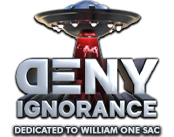08-16-2024, 02:33 AM
This post was last modified 08-16-2024, 02:33 AM by Maxmars. Edited 1 time in total.
Edit Reason: title fix
There was long-standing question about what exactly hit the Earth 66 million years ago at the Chicxulub impact site... a new paper seems to indicate that the culprit was an asteroid... specifically a "carbonaceous-type" asteroid.
The researchers are making the assertion based upon their observations of ruthenium isotopes in the impact deposits to determine that it was no comet.
From Science.org: Ruthenium isotopes show the Chicxulub impactor was a carbonaceous-type asteroid
The editor offer this summary....
The geologic boundary between the Cretaceous and Paleogene eras 66 million years ago is marked by worldwide deposits from an impact at modern Chicxulub, Mexico. The impact coincides with a mass extinction that wiped out non-avian dinosaurs and many other species. Fischer-Gödde et al. measured ruthenium isotopes in the impact deposits and compared them with multiple classes of meteorites, which represent potential impactor compositions. They found that the Chicxulub impactor was a carbonaceous asteroid that formed in the outer Solar System. Additional measurements of five other impacts showed that those were due to silicate asteroids that formed in the inner Solar System.
The abstract expands ...
An impact at Chicxulub, Mexico, occurred 66 million years ago, producing a global stratigraphic layer that marks the boundary between the Cretaceous and Paleogene eras. That layer contains elevated concentrations of platinum-group elements, including ruthenium. We measured ruthenium isotopes in samples taken from three Cretaceous-Paleogene boundary sites, five other impacts that occurred between 36 million to 470 million years ago, and ancient 3.5-billion- to 3.2-billion-year-old impact spherule layers. Our data indicate that the Chicxulub impactor was a carbonaceous-type asteroid, which had formed beyond the orbit of Jupiter. The five other impact structures have isotopic signatures that are more consistent with siliceous-type asteroids, which formed closer to the Sun. The ancient spherule layer samples are consistent with impacts of carbonaceous-type asteroids during Earth’s final stages of accretion.
Just in case, like me, you had wondered about it...
The researchers are making the assertion based upon their observations of ruthenium isotopes in the impact deposits to determine that it was no comet.
From Science.org: Ruthenium isotopes show the Chicxulub impactor was a carbonaceous-type asteroid
The editor offer this summary....
The geologic boundary between the Cretaceous and Paleogene eras 66 million years ago is marked by worldwide deposits from an impact at modern Chicxulub, Mexico. The impact coincides with a mass extinction that wiped out non-avian dinosaurs and many other species. Fischer-Gödde et al. measured ruthenium isotopes in the impact deposits and compared them with multiple classes of meteorites, which represent potential impactor compositions. They found that the Chicxulub impactor was a carbonaceous asteroid that formed in the outer Solar System. Additional measurements of five other impacts showed that those were due to silicate asteroids that formed in the inner Solar System.
The abstract expands ...
An impact at Chicxulub, Mexico, occurred 66 million years ago, producing a global stratigraphic layer that marks the boundary between the Cretaceous and Paleogene eras. That layer contains elevated concentrations of platinum-group elements, including ruthenium. We measured ruthenium isotopes in samples taken from three Cretaceous-Paleogene boundary sites, five other impacts that occurred between 36 million to 470 million years ago, and ancient 3.5-billion- to 3.2-billion-year-old impact spherule layers. Our data indicate that the Chicxulub impactor was a carbonaceous-type asteroid, which had formed beyond the orbit of Jupiter. The five other impact structures have isotopic signatures that are more consistent with siliceous-type asteroids, which formed closer to the Sun. The ancient spherule layer samples are consistent with impacts of carbonaceous-type asteroids during Earth’s final stages of accretion.
Just in case, like me, you had wondered about it...










